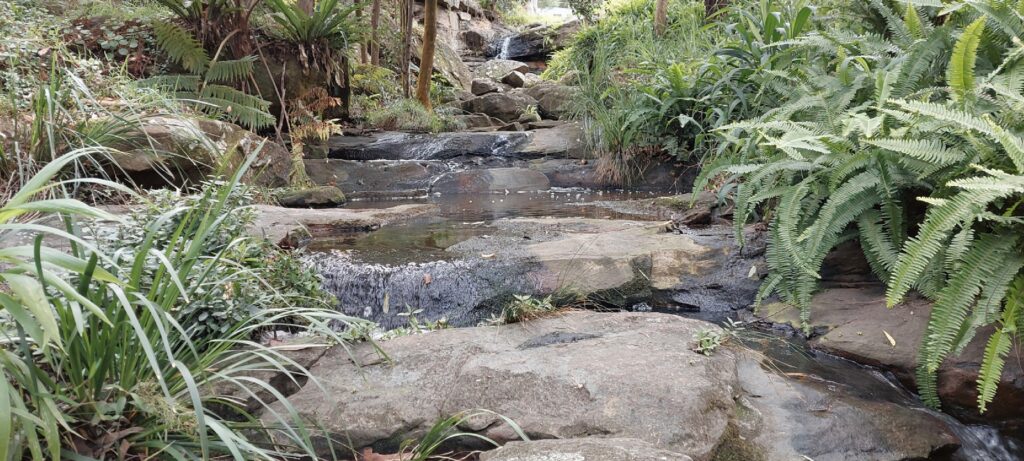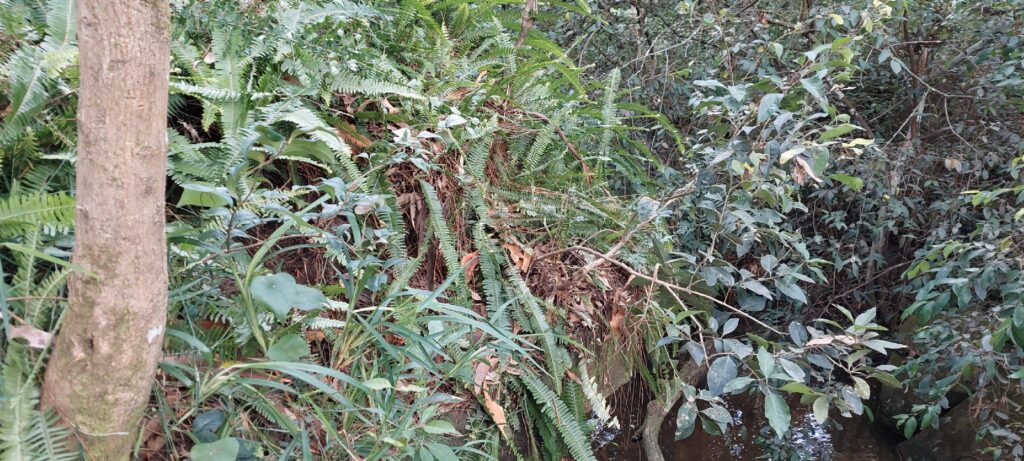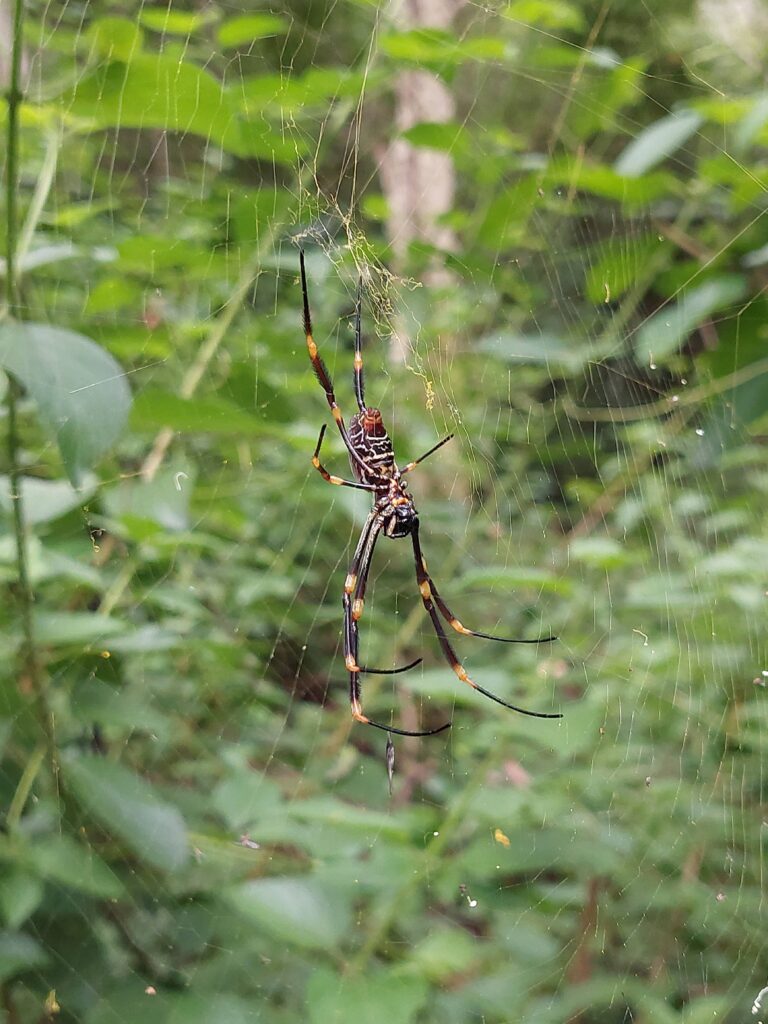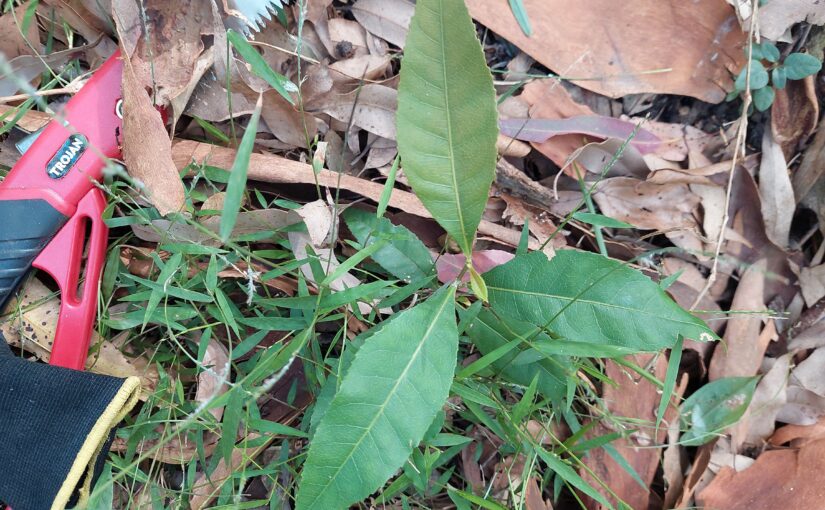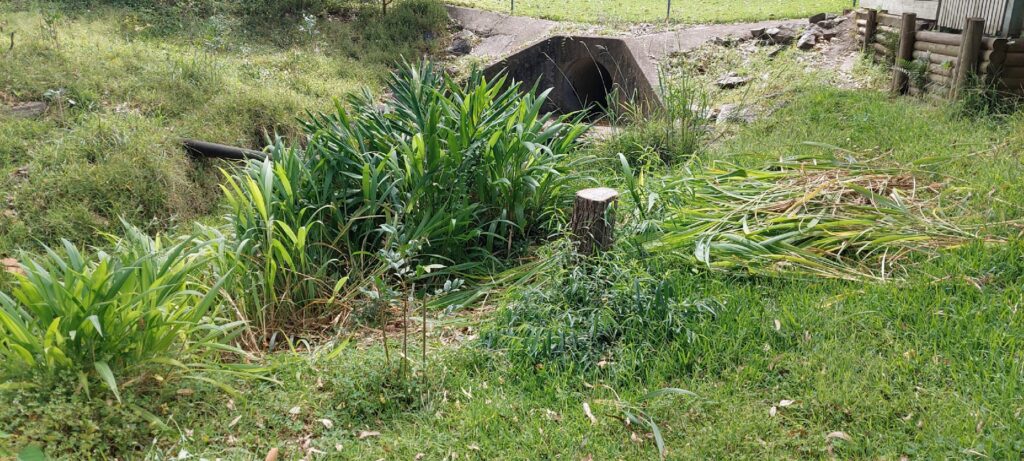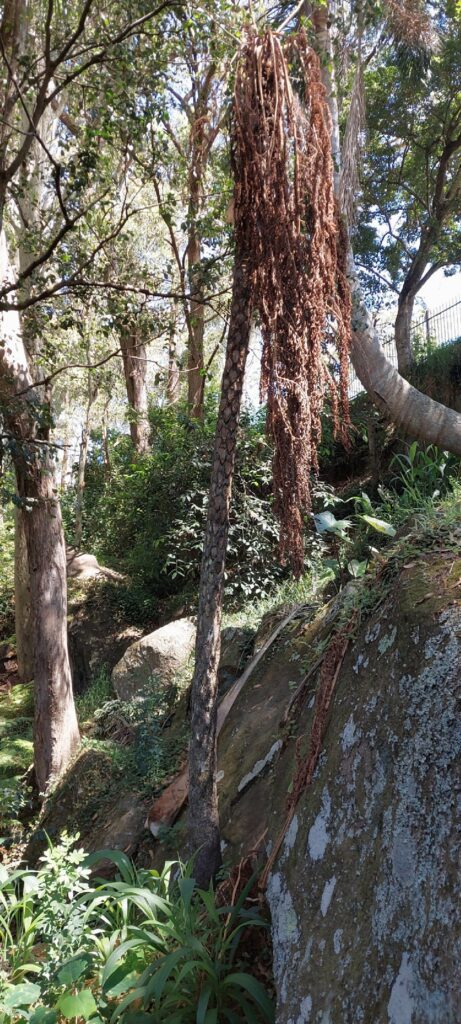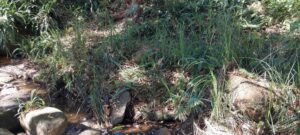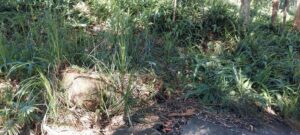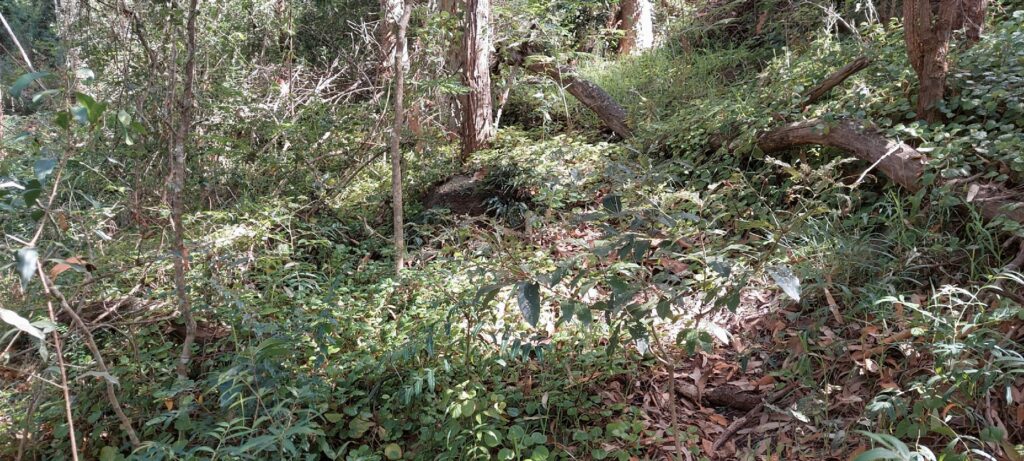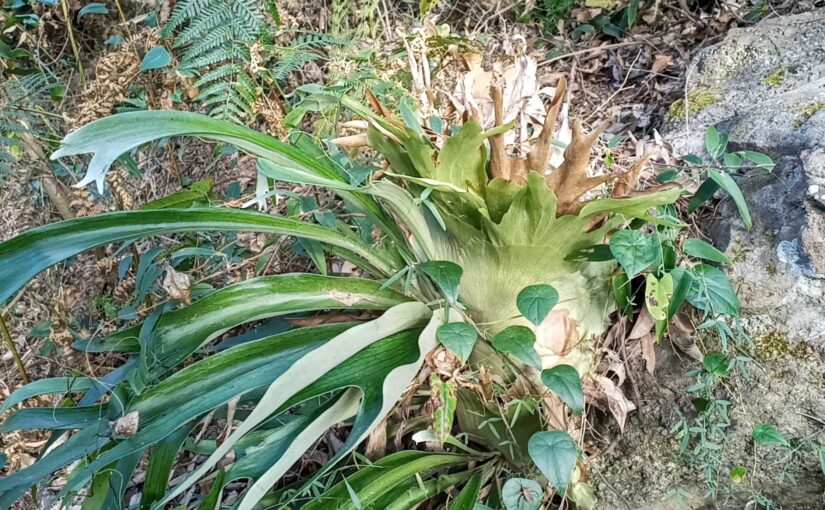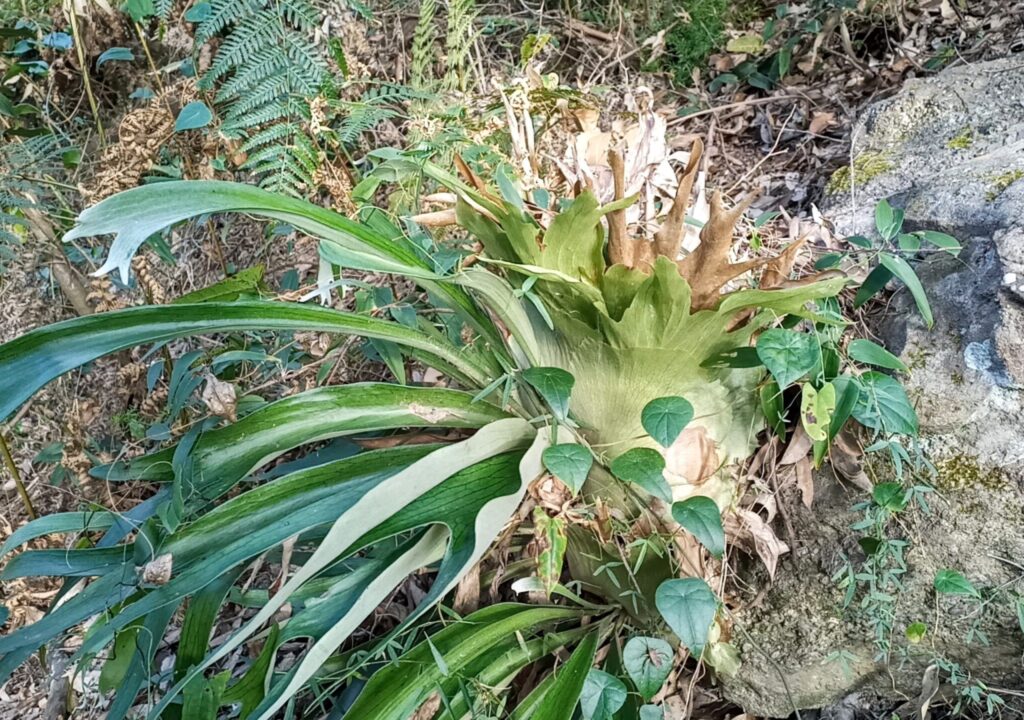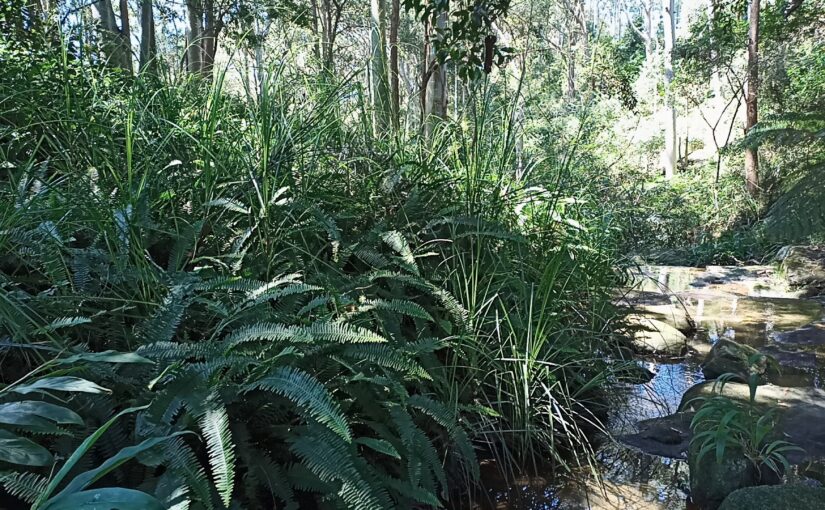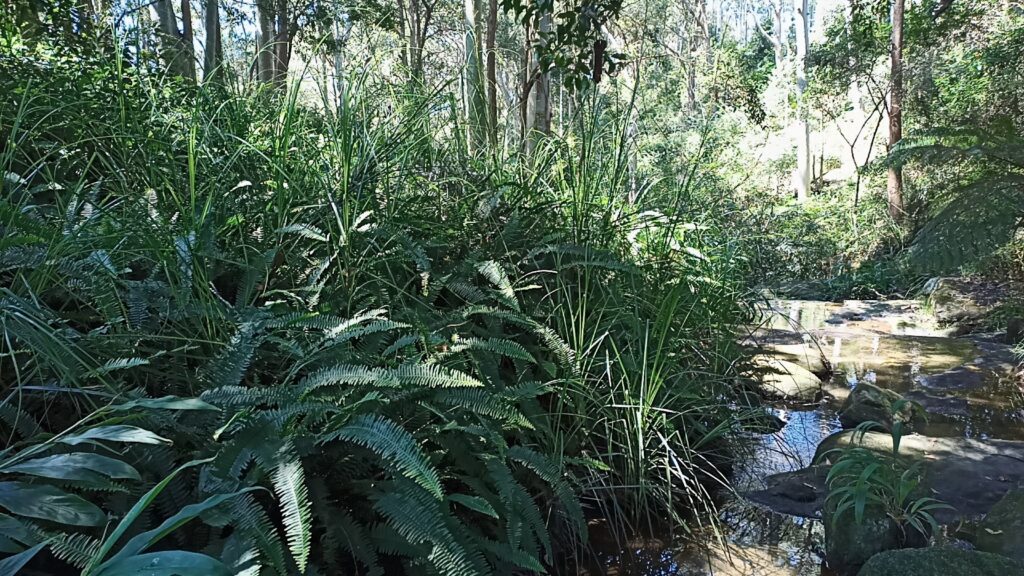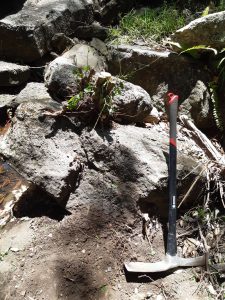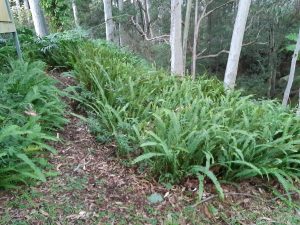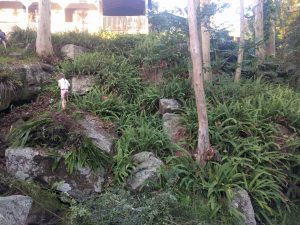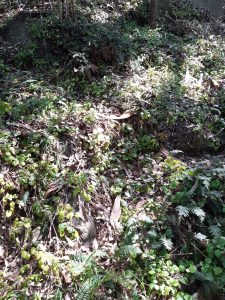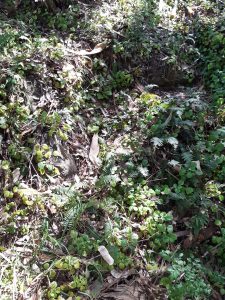Was able to do a solid 3hrs on the Saturday which felt quite productive. Great day for bush regeneration with a cloudy day keeping it quite cool and previous rains making the soil easy to work with.
We have had a lot of rain so everything is growing well at the moment.
Including the weeds unfortunately. The track from second fall that I normally use had been swallowed by fishbone ferns.
So that was a good place to start… I looked through the fishbone fern for any natives and cleared around those. I found pittosporums, false bracken, blue flax lilly and others who were all doing their best to stay above the fishbone fern. I have done this multiple times now and each time the desired native plants get more numerous and larger. It is all heading in the right direction.
A native olive tree that I had previous cleared around is doing well with new growth showing but no new shoots closer to the cliff were visible. Still, other natives were taking advantage so that’s a win.
Notice the blue flax lilly and elderberry panax in the bottom left corner…
After this I moved down the lower creek section and pushed back lantana around a stand of bracken that I have posted about previously. Unfortunately the rain came in so no photos.
There are many seedlings of desired species popping up at present. Another two years will see a transformation I believe.
One last thing I could not resist taking a photo of was this spider. A beautiful specimen I thought… A golden orb spider I have been informed.
I’m looking forward to next weekend. My intention is to once again look for natives that need some more space to grow but there is also an infestation of Swedish Ivy that needs attention. It has been disturbing to see it popping up in more and more places.

